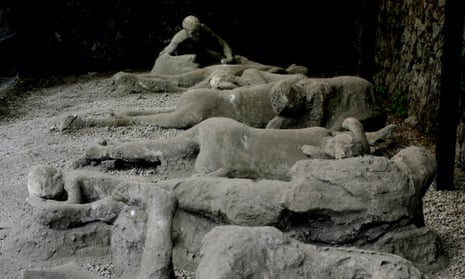New DNA evidence rewrites long-told stories of people in ancient Pompeii | AP News
Identity of casts of victims at Pompeii not all they seem, research suggests | Archaeology | The Guardian
In short:
DNA testing of 14 individuals buried in the ancient Roman city of Pompeii has shown their sex and ethnic background is different to what earlier archaeologists assumed.
Nuclear and mitochondrial DNA samples showed an individual assumed to be a mother wearing a golden bracelet was actually a male unrelated to the group he was found with.
What's next?
Over 1,000 people have been found in the ashes of Mount Vesuvius' eruption across the site with DNA testing ongoing since 2015.
A 2015 restoration of some plaster casts of remains found many had been significantly altered by the first archaeologists and restorers who found them, meaning interpretations based on the final pose or shape of the victims' bodies were impacted, as well as assumptions around proximity and gender roles.
"These discoveries challenge longstanding interpretations, such as associating jewelry with femininity or interpreting physical closeness as an indicator of biological relationships, . ."
"Instead of establishing new narratives that might also misrepresent these people's lived experiences, these results encourage reflection on conceptions and construction of gender and family in past societies as well as in academic discourse."
The eruption of Somma-Vesuvius in 79 CE buried several nearby Roman towns, killing the inhabitants and burying under pumice lapilli and ash deposits a unique set of civil and private buildings, monuments, sculptures, paintings, and mosaics that provide a rich picture of life in the empire.
The eruption also preserved the forms of many of the dying as the ash compacted around their bodies. Although the soft tissue decayed, the outlines of the bodies remained and were recovered by excavators centuries later by filling the cavities with plaster.
- From skeletal material embedded in the casts, we generated genome-wide ancient DNA and strontium isotopic data to characterize the genetic relationships, sex, ancestry, and mobility of five individuals.
Keywords
READ MORE ABC NEWS






No comments:
Post a Comment